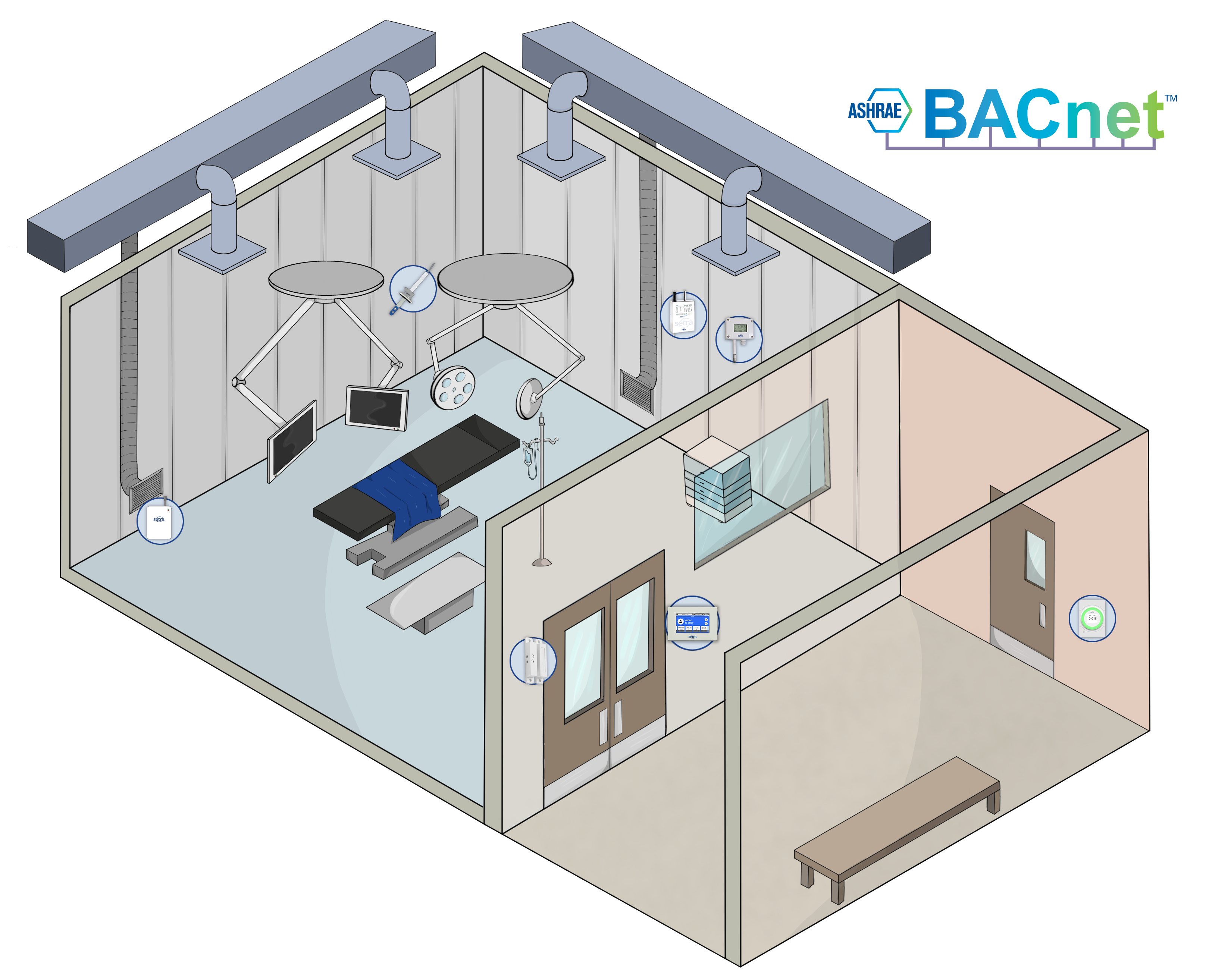Operating rooms (ORs) are among the most thoroughly regulated spaces in a hospital. As a room where patients are particularly at risk of contracting an airborne infection, patient safety is a priority. A successful surgery relies on both the skill of medical professionals and the integrity of the space. Controlling this critical environment with the proper equipment keeps patients protected from contagions.
An OR's safety rests on an HVAC system to regulate the potential spread of airborne infections. ASHRAE Standard 170 dictates the requirements an operating room must observe to be safe for use. To meet said requirements, an OR needs a certain combination of sensors working together. Setra has developed a reliable and accurate environmental monitoring package ideal for meeting these specifications in an OR.

The anchor of all the sensors pictured above is Setra FLEX. As an environmental monitor, FLEX does more than just measure differential pressure; when connected with the other sensors in the space, FLEX becomes the hub for information and control. Setra FLEX also ties back to a BMS so the OR can be monitored anywhere in a hospital.
Pressure
For monitoring pressure in secondary spaces like an anteroom, Setra Lite provides a local, visual pressure indication while maintaining all the capabilities of a traditional differential pressure transducer. A secondary pressure reading can also be useful if only one fully-fledged environmental room monitor is necessary but there are multiple entrances to the OR. Setra Lite communicates with most BMS and ties into FLEX, displaying the secondary pressure reading in a centralized location.
Door Switch
Preserving the integrity of an OR also hinges on a door sensor. The longer a door is open, the more an OR is at risk of being compromised. With most door sensors working with FLEX, a dedicated badge onscreen alerts users if a door remains open for an extended period of time.
Temperature and Humidity
Proper temperature and relative humidity control is crucial for preventing bacteria growth and ensuring the safety of the patient and operating theater. A consistent temperature within a range helps maintain comfort and keeps the space safe from contagions. Additionally, an OR should maintain a relative humidity of 20% RH to 60% RH to comply with ASHRAE regulations. Setra's line of T/RH sensors transmits readings to FLEX over BACnet so occupants are notified if the temperature or relative humidity falls out of range.
Particle Counting
Continuous particle counting helps with early detection of leaks or cracks that result in particle spikes so they can be resolved; such detection prevents OR integrity and patient health from being severely compromised. As the most feature advanced remote particle counters available, Setra's 5000 series can be wall-mounted and is well-suited to provide real-time monitoring of particle counts in an OR.
Velocity
Although velocity wands aren't currently required in ORs, they help guarantee air is moving properly throughout an OR, particularly over the operating table. Serta's velocity wand sensor is designed to be highly accurate and reliable and, like most third-party velocity wands, can tie directly into FLEX to display readings.


